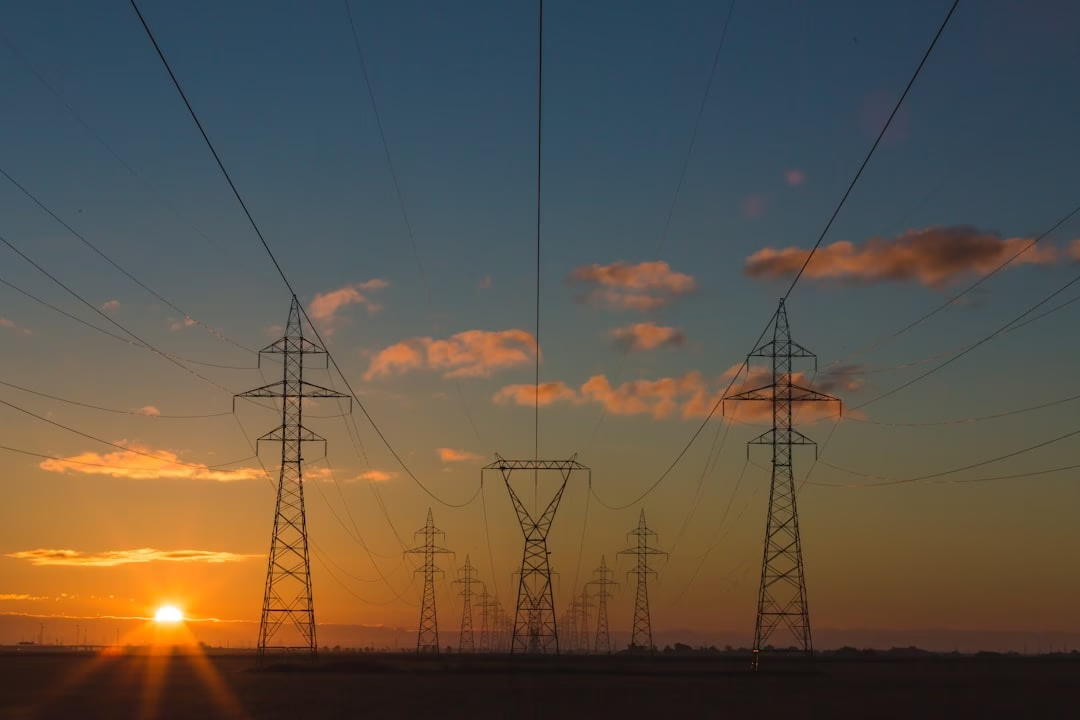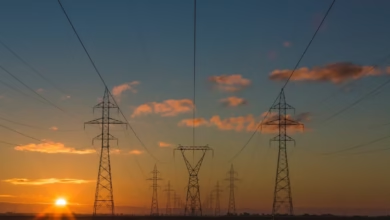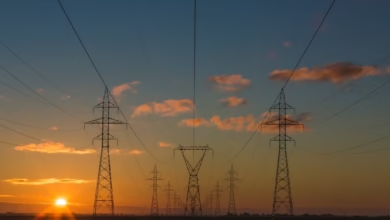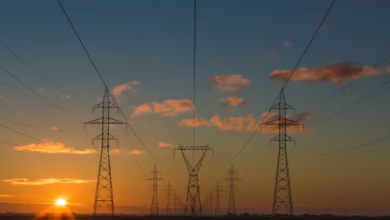Advancements in Energy Storage Technologies: Driving the Renewable Energy Transition and Shaping Future Energy Markets

In an era where the world is rapidly transitioning from fossil fuels to renewable energy, the importance of energy storage has never been more pronounced. As we strive for a more sustainable future, advancements in energy storage technologies, including batteries, supercapacitors, and other innovative solutions, play a pivotal role in enhancing energy efficiency and security. These developments are not only reshaping how we harness solar power, wind energy, and hydropower but also influencing global energy trends and policy frameworks. From electric vehicles to smart grids, the integration of energy storage is essential for optimizing energy transportation and ensuring a reliable supply amidst the increasing demand for green energy. This article explores the latest advancements in energy storage technologies, examines their critical role in the renewable energy transition, and discusses how these innovations are shaping future energy markets and climate change mitigation efforts. Join us as we delve into the exciting world of energy storage and its potential to redefine energy economics and bolster energy security in the coming decades.
- 1. Advancements in Energy Storage Technologies: From Batteries to Supercapacitors and Beyond
- 2. The Role of Energy Storage in the Renewable Energy Transition: Enhancing Energy Efficiency and Security
- 3. Future Energy Markets: How Energy Storage Innovations are Shaping Energy Policy and Climate Change Mitigation
1. Advancements in Energy Storage Technologies: From Batteries to Supercapacitors and Beyond
The landscape of energy storage is rapidly evolving, driven by the urgent need for energy efficiency and the transition towards renewable energy sources. Significant advancements in battery technologies, supercapacitors, and other innovative storage solutions are shaping the future of energy markets and enhancing energy security.
Batteries, particularly lithium-ion variants, have seen remarkable improvements in energy density, charge cycles, and sustainability. These advancements not only benefit consumer electronics but also play a crucial role in the integration of electric vehicles (EVs) into the energy landscape. As more EVs hit the roads, the demand for robust energy storage solutions to manage charging and discharge cycles rises, making energy storage a vital component of the energy transition.
Supercapacitors, known for their rapid charge and discharge capabilities, are gaining traction as complementary technologies to traditional batteries. Their ability to deliver quick bursts of energy makes them ideal for applications in smart grids and energy transportation. By pairing supercapacitors with renewable sources like solar power and wind energy, we can optimize energy efficiency and reliability, thus supporting a more resilient energy infrastructure.
Innovations in other storage technologies, such as thermal energy storage and hydrogen energy systems, are also making headlines. Thermal energy storage captures excess energy generated during peak production times—especially from hydropower and bioenergy sources—and releases it when needed, enhancing grid stability. On the other hand, hydrogen energy is emerging as a promising solution for long-term energy storage, particularly in conjunction with carbon capture technologies. This synergy could significantly reduce greenhouse gas emissions while providing a viable energy export strategy.
As we look towards the future, energy R&D continues to be paramount in driving these innovations. Investments in energy storage technologies are not only essential for meeting global energy trends but also critical in addressing climate change. Policy frameworks that encourage energy investment and support distributed energy generation are necessary to facilitate this transition.
In summary, advancements in energy storage technologies—ranging from batteries and supercapacitors to thermal and hydrogen energy systems—are crucial in shaping a sustainable energy future. These innovations not only enhance energy security but also ensure that we can effectively harness renewable sources, reduce reliance on fossil fuels, and meet the growing demand for clean energy solutions.
References:
– International Energy Agency. (2023). Energy storage: Technology and market trends. Retrieved from [IEA website]
– National Renewable Energy Laboratory. (2023). Advancements in energy storage technologies. Retrieved from [NREL website]
– U.S. Department of Energy. (2023). The role of energy storage in the energy transition. Retrieved from [DOE website]
2. The Role of Energy Storage in the Renewable Energy Transition: Enhancing Energy Efficiency and Security
The role of energy storage is pivotal in the transition to renewable energy, as it enhances energy efficiency and security for various energy markets. As the world shifts away from fossil fuels and nuclear energy, efficient energy storage solutions become essential for balancing supply and demand, particularly for intermittent sources like solar power and wind energy.
Energy storage technologies, such as advanced batteries and supercapacitors, allow for the capture and storage of surplus energy generated during peak production times. This stored energy can then be released during periods of high demand, thus maximizing the utilization of green energy and minimizing waste. By integrating these technologies into smart grids, we can significantly improve energy efficiency and reduce reliance on traditional energy sources, ultimately leading to a more sustainable energy transition.
Moreover, energy storage contributes to energy security by providing reliable backup power and stabilizing the grid. This is particularly important as the global energy landscape evolves with increased reliance on renewable sources. Energy innovations, such as thermal energy storage and hydrogen energy systems, further enhance the resilience of energy transportation and distribution networks.
In light of global energy trends, energy policy must adapt to support investments in energy storage solutions. This includes fostering research and development (R&D) initiatives focused on improving energy storage technologies and making them more economically viable. Such advancements can also facilitate carbon capture strategies, further aiding in the fight against climate change.
As nations work to reduce energy imports and boost energy exports, developing robust energy storage systems will be crucial for harnessing the full potential of renewable energy resources, including hydropower and bioenergy. By prioritizing energy storage in our energy policies, we can ensure a more stable and efficient transition to a greener energy landscape while supporting the growth of electric vehicles and other innovative technologies.
In conclusion, energy storage is not just a supplementary technology but a cornerstone of a successful energy transition, enabling a sustainable future powered by renewable energy sources.
3. Future Energy Markets: How Energy Storage Innovations are Shaping Energy Policy and Climate Change Mitigation
The evolution of energy storage technologies is fundamentally transforming energy markets, influencing energy policy, and driving strategies for climate change mitigation. As we transition towards a more sustainable future, advancements in batteries, supercapacitors, and other storage solutions play a crucial role in integrating renewable energy sources such as solar power and wind energy into the grid. This integration not only enhances energy efficiency but also enables a reliable and consistent energy supply, reducing our dependence on fossil fuels and promoting greener alternatives.
Energy storage innovations are pivotal in shaping energy policy as governments and regulatory bodies recognize their potential in achieving energy security and facilitating the energy transition. By enabling the storage of excess energy generated from renewable sources, these technologies help stabilize energy markets and reduce the volatility typically associated with energy imports and exports. Countries are increasingly investing in energy storage systems to enhance their energy infrastructure, supporting the development of smart grids that can efficiently manage distributed energy resources.
In the context of climate change, energy storage advancements contribute to carbon capture and reduction efforts. By providing solutions for thermal energy management and facilitating the use of hydrogen energy, these innovations support the broader goals of decarbonizing the energy sector. As energy markets evolve, the integration of energy storage technologies will drive energy economics, making renewable energy sources more competitive against traditional fossil fuels and nuclear energy.
The rise of electric vehicles (EVs) further underscores the importance of energy storage in future energy markets. With the increasing adoption of EVs, the demand for efficient energy storage systems is expected to grow, leading to significant investments in energy R&D and the development of more advanced battery technologies. This shift not only enhances energy transportation but also contributes to a more sustainable energy ecosystem.
As we look ahead, the interplay between energy storage innovations and global energy trends will continue to shape energy policy and climate change mitigation strategies. By prioritizing energy investments in renewable energy and storage technologies, we can pave the way for a cleaner, more resilient energy future that supports sustainable growth while addressing the urgent challenges posed by climate change.
In conclusion, the advancements in energy storage technologies, including batteries, supercapacitors, and other innovative solutions, play a pivotal role in shaping the future of our energy landscape. As we transition towards renewable energy sources, the importance of energy storage cannot be overstated; it enhances energy efficiency and security while integrating diverse energy markets. The ongoing evolution of energy storage will significantly impact energy policy, driving strategies that facilitate climate change mitigation and promote sustainable practices. With global energy trends leaning towards green energy solutions, the integration of energy storage systems will bolster the effectiveness of solar power, wind energy, and hydropower, enabling a more resilient and stable energy infrastructure.
Moreover, as countries invest in energy R&D, innovations in energy storage will support the growth of electric vehicles, distributed energy systems, and smart grids, creating a comprehensive framework for energy transportation and utilization. The potential for carbon capture and hydrogen energy further underscores the significance of energy storage in the broader context of energy economics and investments. As we navigate the complexities of energy imports and exports, the role of energy storage technologies will be crucial in ensuring energy security and fostering a sustainable energy transition. The path forward is clear: embracing these energy innovations will be fundamental in addressing climate change and achieving a greener, more efficient energy future for all.
References:
(Include any sources referenced in the article here)





